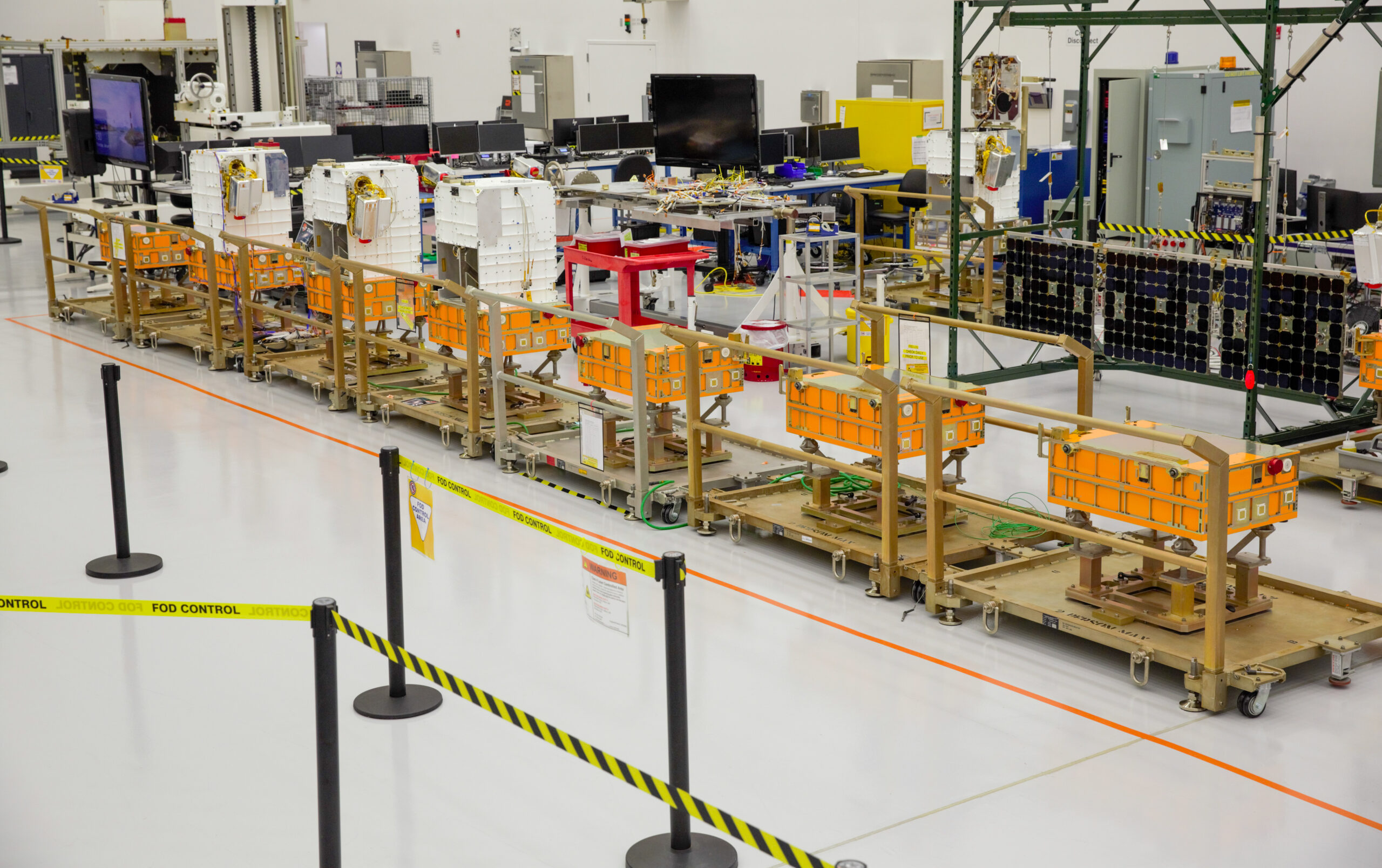WASHINGTON — Lockheed Martin, a company that for decades has built schoolbus-sized spacecraft for the U.S. government, opened a new facility to assemble small satellites, which are now in higher demand.
Lockheed Martin’s 20,000-square-foot factory is located at the company’s Waterton campus near Denver, Colorado. It has six parallel assembly lines and capacity to manufacture 180 small satellites per year, Kevin Huttenhoff, Lockheed Martin’s senior manager for space data transport, told SpaceNews.
The first satellites to be made at the facility are for the U.S. Space Force’s Space Development Agency. SDA plans to build a mesh network of hundreds of data transport and missile-detection sensor satellites in low Earth orbit.
Lockheed Martin in February 2022 won a $700 million contract to produce 42 communications satellites for SDA’s Transport Layer Tranche 1. The company in November 2020 also won a $187.5 million contract to manufacture 10 Transport Layer Tranche 0 satellites that are scheduled to launch later this month.
The Transport Layer Tranche 1 satellites — projected to launch in late 2024 — will be made at the new factory. The Tranche 0 satellites were assembled at a different facility where Lockheed Martin manufactures Global Positioning System (GPS) spacecraft.
Huttenhoff said the smallsat factory’s capabilities include thermal cycle and electromagnetic chambers that can be scaled to build and test satellites of different sizes.
Industry moving to smallsats
Lockheed Martin decided to invest in a new factory in response to shifting demands, said Huttenhoff.
“First and foremost, we see that, overall, the industry is going toward proliferated architectures,” he said. “Small satellites are becoming the preference across the industry over the large satellites. We’re hearing our government customers wanting to move away from some of the exquisite systems into smaller, more proliferated systems.”
The smallsat facility can be configured to assemble classified satellites for DoD and the intelligence community, in parallel with commercial satellites or satellites for non-U.S. government customers, said Huttenhoff.
